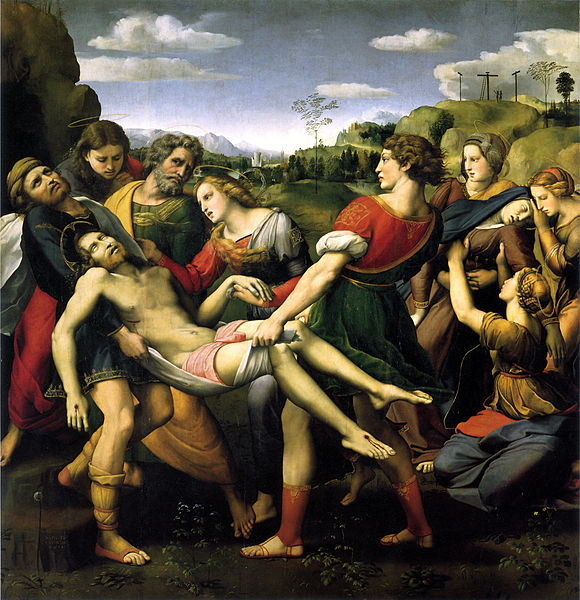| The Deposition | |
|---|---|
 |
|
| Artist | Raphael |
| Year | 1507 |
| Medium | Oil on wood |
| Location | Galleria Borghese of Rome, Italy |
| Dimensions | 72 in × 69 in |
| 184 cm × 176 cm | |
The Deposition (by Raphael) is a famous Italian Renaissance painting depicting the Deposition, Lamentation, and Entombment of Christ. It also is known as the Borghese Deposition, Pala Baglione, or The Entombment, and it currently resides in the Galleria Borghese in Rome.
History
In 16th century Italy, violence among gangs or factions of Italians was fairly common. On July 3, 1500, the Italian Grifonetto Baglioni was murdered by Gian Paolo Baglioni in one of these gang-related incidents. His mother commissioned Raphael, who would afterwards become a famous Italian Renaissance painter, to create a commemoration to Grifonetto. Raphael spent the next two years designing an altarpiece that would honor Grifonetto in the family’s chapel.
Raphael took the project very seriously and made a number of preparatory drafts for his idea. He wanted to include a scene depicting the Lamentation over the body of a dead Jesus Christ. This idea led into the creation of the image of the Entombment and Deposition as well.
Analysis
The Deposition is considered a narrative painting, as it tells the story of the final days of Jesus Christ. Many see the Lamentation and Entombment as very influential pieces, and many viewers are very moved by the sorrowful scenes. It is believed that one of the youths carrying the body of Christ is meant to depict Grifonetto, whom the painting was dedicated to. St. John and Mary Magdalene can also be seen in the painting walking on the sides of the body. The Virgin Mary can be seen in another group of figures. She is being supported after seeming to have fainted.
The painting was taken in 1608 by another gang under the orders of Cardinal Scipione Borghese. Pope Paul V commissioned two more copies of The Deposition in order to appease the residents of Perugia, from which the painting was stolen.